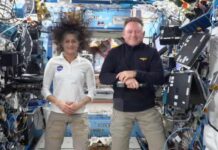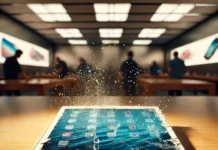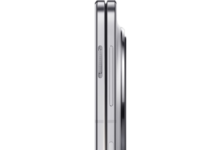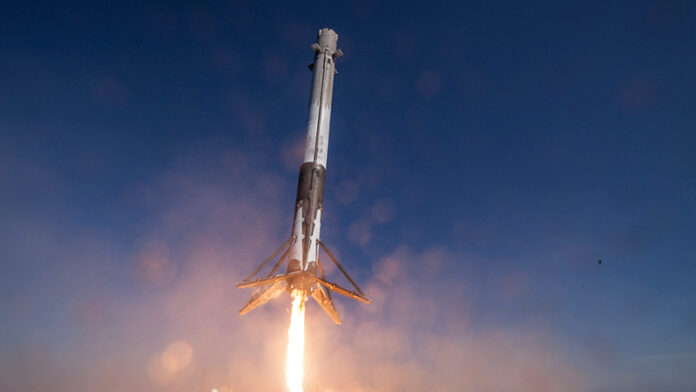Introduction The quest for reusable space technology has long been a focal point of space exploration efforts. In recent years, space companies have made significant advances in developing rockets and boosters that can be reused after their missions. The event of “Space catches rocket booster in dramatic landing” represents a major milestone in this pursuit, capturing the attention of the global space industry and marking another step towards making space travel more cost-effective and sustainable. This report will delve into the technological, economic, and environmental implications of this dramatic booster landing.
Background and Context In traditional space missions, the rocket boosters responsible for launching spacecraft into orbit are typically discarded after use. They either burn up in the atmosphere or fall into the ocean, representing a substantial loss in both materials and financial investment. Reusing rocket boosters has been a long-standing goal, as it significantly reduces costs associated with space launches.
SpaceX pioneered the technology of reusable rockets with its Falcon 9 program. However, various other space companies have joined the race, each vying to perfect this capability. On the day of the dramatic landing in question, a new milestone was reached as the rocket booster executed a complex landing maneuver to be safely caught by a recovery system.
Details of the Rocket Booster Landing The rocket booster in question was part of a space mission designed to deploy a satellite into orbit. After completing its primary mission of launching the satellite, the booster detached from the rocket’s second stage and began its descent back to Earth. During reentry, the booster faced immense atmospheric pressure and extreme temperatures, but it was designed to withstand these conditions.
As the booster approached the Earth’s surface, it executed a series of automated precision burns, guided by onboard navigation systems. These controlled burns are essential for reducing the velocity of the booster and orienting it correctly for landing. The dramatic aspect of this landing was the precision with which the booster approached the landing platform, a floating drone ship located in the ocean.
In the final seconds of its descent, the booster activated landing legs and thrusters to slow its descent. The crucial moment came when the rocket booster was caught by the landing system—a complex combination of drone ship stabilization, onboard rocket thrusters, and precision control software. The sight of the rocket touching down smoothly on the platform amidst clouds of vaporized propellant was a thrilling demonstration of cutting-edge space engineering.
Technological Advancements This dramatic rocket booster landing is the result of several key technological advancements, including:
- Landing Accuracy and Precision Guidance: The onboard guidance systems use GPS and other sensors to track the booster’s location and speed, making adjustments in real-time. Space companies have developed highly accurate algorithms to ensure the rocket can land on a small platform in the open ocean.
- Thrust Vectoring and Controlled Descent: The booster is equipped with vectoring nozzles and fins that allow it to control its descent, keeping it steady and upright as it falls through the atmosphere. The ability to restart the booster’s engines during descent is critical for executing a controlled landing.
- Autonomous Drone Ship: The platform that catches the rocket is an autonomous drone ship that can position itself in the optimal location in the ocean based on the booster’s trajectory. It has been equipped with sensors and stabilizers to ensure it remains in position, even in choppy sea conditions.
Economic Implications The successful recovery of the rocket booster is a significant economic achievement for the space industry. Reusing boosters reduces the need for building new ones for each launch, which in turn decreases the cost of space exploration. In the long term, the ability to reuse boosters could result in a dramatic reduction in the cost of sending payloads into space, potentially making space travel accessible to more entities, including smaller companies, research institutions, and even private citizens.
For companies like SpaceX and Blue Origin, who are competing in the commercial spaceflight market, mastering the recovery of rocket boosters is a key differentiator. The dramatic success of this landing showcases the potential for reusable rocket technology to support a wide range of space missions, including satellite deployments, scientific research, and interplanetary exploration.
Environmental Impact The move toward reusability in space technology is not only economically beneficial but also environmentally impactful. Traditional rocket launches create a significant amount of waste, as discarded boosters and stages are often left to decay in orbit or crash into the ocean. By recovering and reusing rocket boosters, space companies can drastically reduce the environmental footprint of space launches.
Moreover, reusability minimizes the demand for manufacturing new boosters, which reduces resource consumption and energy use. In the future, innovations in clean fuel technology combined with reusable rockets could make space travel more sustainable, lowering both carbon emissions and material waste associated with space launches.
Challenges and Future Prospects While the dramatic landing of the rocket booster was a significant achievement, there are still challenges to be overcome in making reusable rocket technology more reliable and cost-effective. Some of these challenges include:
- Engine Durability: The rocket engines experience extreme stress during both launch and landing. Repeated use of the same engines requires advancements in materials science to ensure that they can withstand multiple cycles of use without degradation.
- Landing Accuracy: While the precision of this landing was remarkable, ensuring consistent and reliable landings for every booster is still a technological challenge. Improvements in artificial intelligence, machine learning, and sensor accuracy could further enhance landing systems.
- Recovery in Adverse Conditions: Ocean recovery, while practical, is complicated by weather conditions and sea states. Developing better methods for recovering boosters in harsher environments will be crucial for expanding the use of reusable technology to more missions.
Despite these challenges, the successful landing of this booster is a promising indicator of the future. As reusable technology continues to evolve, the space industry is poised to enter a new era of innovation, where frequent and affordable launches become the norm.
Conclusion The dramatic landing of the rocket booster represents a critical moment in space exploration history. It highlights the significant progress that has been made in reusable rocket technology and sets the stage for more sustainable and cost-effective space travel. This achievement underscores the ingenuity of modern engineering and offers a glimpse into a future where space travel is more accessible, affordable, and environmentally friendly. As technology continues to advance, the vision of reusable space travel will move closer to becoming an everyday reality, opening the door to an exciting new chapter in humanity’s exploration of the cosmos.













































